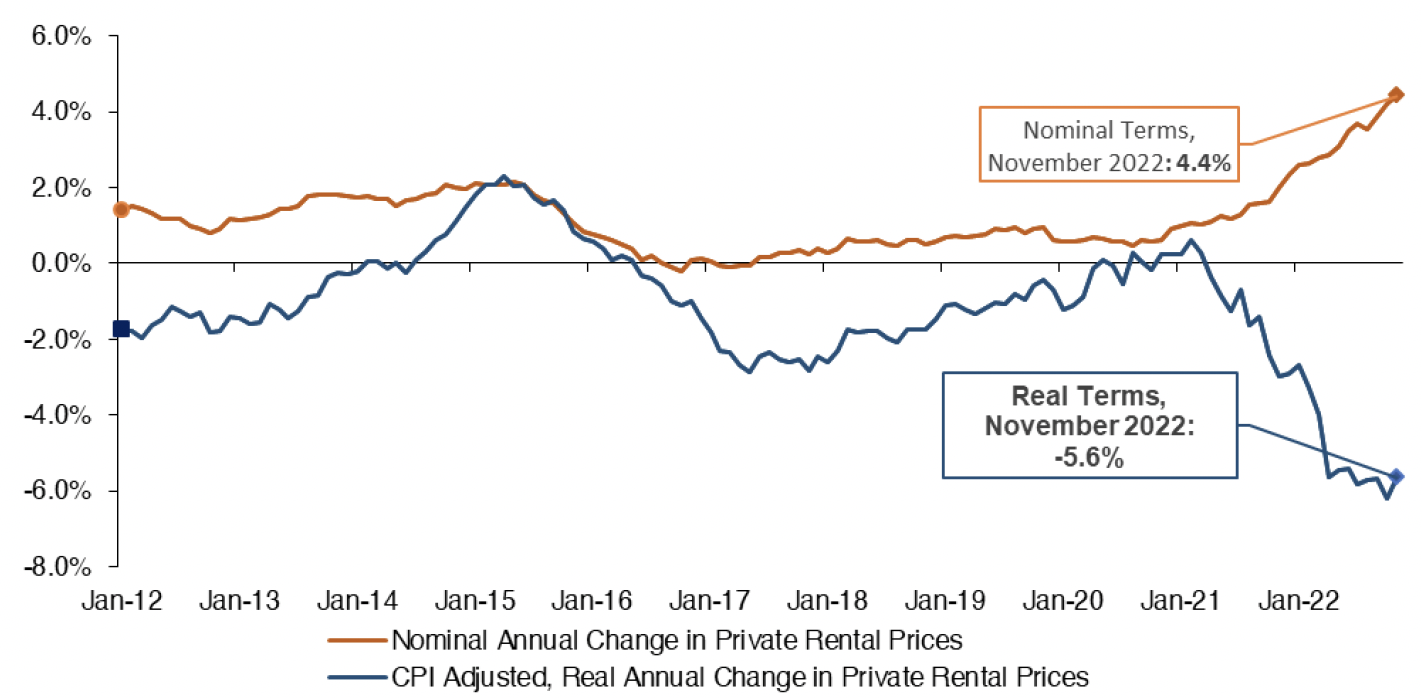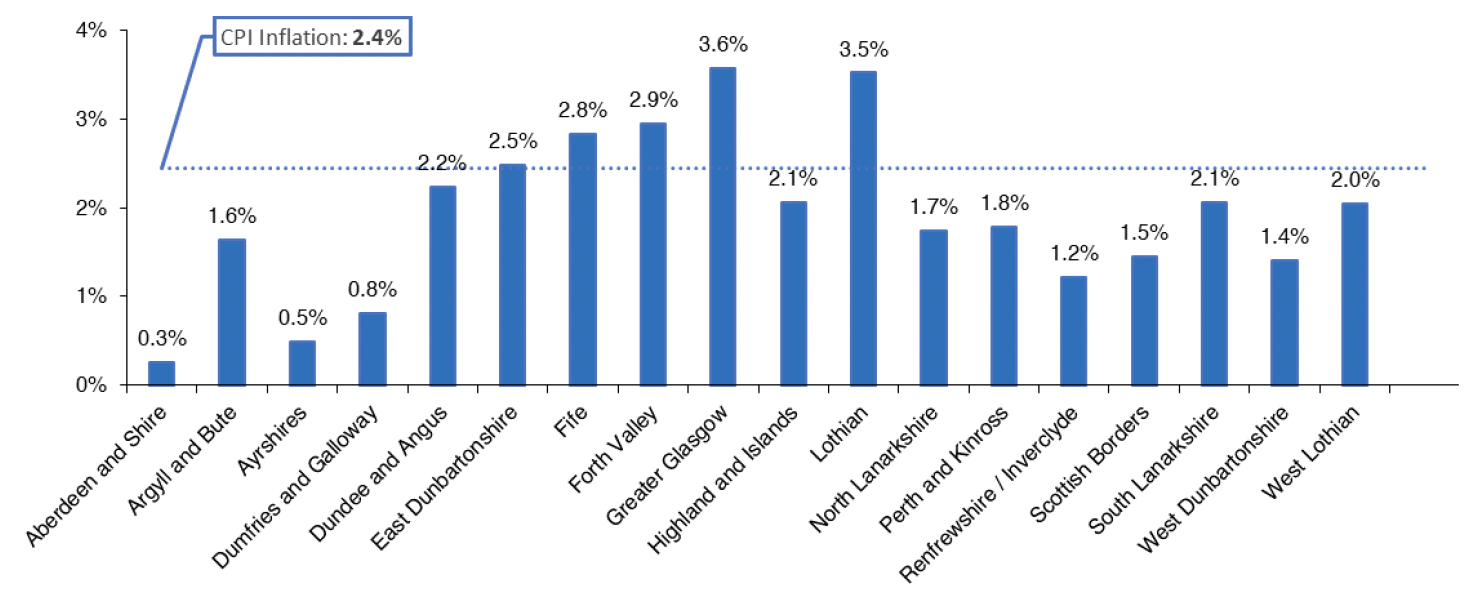Scottish Housing Market Review: Q4 2022
Quarterly bulletin collating a range of statistics on the Scottish housing market, such as house prices and transactions, rental trends, cost and availability of finance, etc.
4. Private Rental Sector
Private Housing Rental Prices
The ONS Private Housing Rental Price Index for Scotland increased by 4.4% annually in November 2022. Previously, nominal private rental price growth across Scotland as a whole had been relatively stable, ranging between 0% and 2% from June 2017 to November 2021. However, in recent months nominal rental prices have increased significantly, with November's figure the highest annual growth recorded since the index began.
While the ONS index uses data drawn from the Rent Service Scotland data collection, which is largely based on advertised rents, it attempts to make an allowance for rents paid by existing tenants by assuming that a rent record remains unchanged for a period of 14 months. Therefore, when rental growth begins to accelerate, the ONS index will lag indices which are based entirely on new let rents. This explains the difference with letting agents' reports, with Citylets reporting annual growth of 8.3% and Rightmove 13.0% in Q3 2022. Letting agencies only cover around half of the private rented sector, and each letting agent's data will be affected by its market coverage, which will vary by geography and market segment; in contrast, Rent Service Scotland data (which is also used in the Scottish Government private rent statistics discussed below) is designed to be representative of the whole market.
In real terms (adjusting for inflation, using CPI), the annual change in the ONS Private Rental Index in November 2022 was -5.6%, due to CPI inflation reaching 10.7% over the same period. The heightened level of CPI inflation can be partly explained by an increase in the price of Housing and Household Services, principally from electricity, gas, and other fuels.

Source: ONS Rental Price Index, Consumer Price Index (CPI)
Scottish Government statistics show that from 2010 to 2022 (years to end September), five broad market rental areas ("BRMAs") have seen average rents for 2 bedroom properties increase, on an average annualised basis, above the average level of CPI inflation (2.4%): these are the Greater Glasgow (3.6%), Lothian (3.5%), Forth Valley (2.9%), Fife (2.8%) and East Dunbartonshire (2.5%) BRMAs. Therefore, the annualised average rate of change was equal to or below that of inflation (CPI) in 13/18 BRMAs, with the lowest annualised rate of change seen in Aberdeen and Shire of just 0.3%.

Source: SG/ONS CPI
* Note: Scottish Government statistics are based almost entirely on advertised rents at point of new let, whilst the ONS methodology makes an allowance for existing lets. In addition, Chart 4.2 looks solely at 2 bedroom properties, whilst Chart 4.1 looks at the entire market.
Rent Freeze and Evictions Moratorium
Tenants have increased protection from rent increases and evictions during the cost of living crisis under emergency legislation passed by the Scottish Parliament. The Cost of Living (Tenant Protection) Act gives Ministers temporary power to cap rents for private and social tenants, as well as for student accommodation. The Act also introduces a moratorium on evictions, except in a number of specified circumstances, and damages for unlawful evictions have been increased to a maximum of 36 months' worth of rent.
This cap, which applies to in-tenancy rent increases, was initially set at 0% for rent-increase notices served from 6 September 2022 until 31 March 2023. The temporary legislation balances the protections that are needed for tenants with some safeguards for those landlords who may also be impacted by the cost crisis, who are be able to increase rents if they can demonstrate an increase in certain costs, such as mortgage interest payments, capped at a maximum of 3%.
Ministers have the power to vary the rent cap while it is in force. The measures can be extended over two further six-month periods, subject to Parliamentary approval, and a decision on the next six-month period will be made in January 2023.
Meanwhile, Ministers and social landlords have agreed on below-inflation social sector rent increases for the next financial year (2023-2024). COSLA has committed to keeping local authority rent increases to an average of no more than £5 a week. Members of the Scottish Federation of Housing Associations and Glasgow West of Scotland Forum of Housing Associations have reported planned increases averaging 6.1%.
Contact
Email: bruce.teubes@gov.scot
There is a problem
Thanks for your feedback